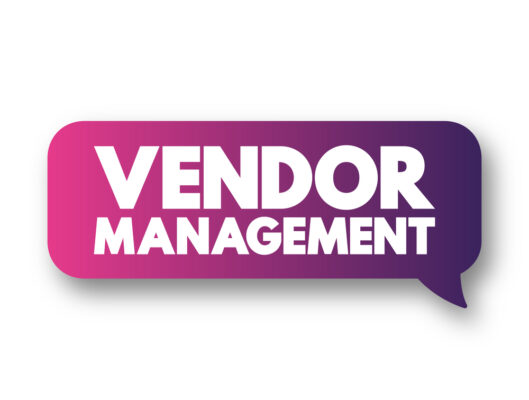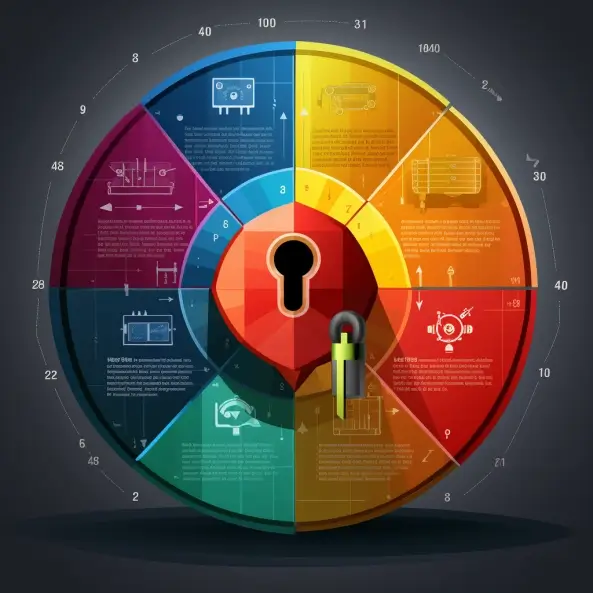It is imperative for organizations to equip themselves with a comprehensive understanding of how to effectively manage and mitigate cybersecurity threats and risks in digital technology.
One crucial tool that professionals use is the NIST Cybersecurity Frameworks. These systematic approaches to managing cybersecurity risk have their roots anchored in the foundations of information technology and data protection.
Key Risk Indicators (KRIs) are a crucial component in an organization’s risk management strategy. These touchstones offer a measurable and quantifiable means to assess the performance and effectiveness of cybersecurity controls.
Understanding NIST Cybersecurity Frameworks
An In-depth Analysis: Understanding NIST Cybersecurity Frameworks
In today’s technologically driven arena, where digital infrastructure operates at the crux of most industries, cybersecurity has become a paramount concern for all businesses, irrespective of size or sector.
A pivotal standard in mitigating cyber risk, strengthening security, and enhancing resilience is established by the NIST Cybersecurity Frameworks.
The National Institute of Standards and Technology (NIST), an entity of the U.S. Department of Commerce, introduced the Cybersecurity Framework as an answer to the rising incidents of cyber threats.
It is a voluntary guidance based on existing standards, guidelines, and practices aimed to streamline cybersecurity risk management.
The NIST Framework isn’t merely a commonly accepted set of controls or practices but is a strategic technological shift to tackle cybersecurity and navigate digital threats.
It’s an all-inclusive, risk-based approach to managing cybersecurity risk, impeccably designed to be cost-effective and efficient.
Built around five key tenets – Identify, Protect, Detect, Respond, and Recover – the NIST Framework crafts a robust, systematic strategy to secure digital assets.
It is designed to promote risk-based decision-making and prioritization, driving organizations to build stronger, more secure systems.
Within the ‘Identify’ function, organizations recognize the business environment, governance, risk assessment, and risk management strategies.
This lets companies know what they need to protect, understand where vulnerabilities lie, and how threats could impact their business operations.
In the ‘Protect’ phase, access control, awareness, data security, protective technology, and other key areas help safeguard digital assets. It underscores curbing the impact of potential cybersecurity events by implementing appropriate safeguards.
The ‘Detect’ function involves anomaly and event detection and continuous monitoring. It stresses the early discernment of cybersecurity events, hence ensuring timely and apt responses.
‘Respond’ ensures that the organization has a planned response once a cybersecurity event occurs. This includes response planning, communications, analysis, mitigation, and improvements. It’s about taking action and responding effectively to limit damage.
Finally, the ‘Recover’ function focuses on recovery planning, improvements, and communication after an incident. Essentially, it ensures the business bounces back as quickly and efficiently as possible.
The NIST Cybersecurity Frameworks also incorporate a tiered approach, providing context on how an organization views cybersecurity risk management. Tier 1 is Partial and Tier 4 is Adaptive; it provides a gauge to measure the sophistication of an organization’s cybersecurity measures.
Although primarily engineered for industries vital to the U.S. economy and security, the NIST Cybersecurity Framework’s flexibility allows adaptation across sectors and businesses worldwide.
It’s not a one-size-fits-all model but a customizable guide that can be scaled according to individual business needs, making it a universally relevant and accessible tool.
Implementing NIST Cybersecurity Frameworks does not eliminate all risks but significantly reduces them. It’s about shifting the narrative from pure compliance to strategic risk management.
It helps organizations institute a strong security posture, safeguard their reputations, and reassure their stakeholders.
Adopting the NIST Cybersecurity Framework is an essential step towards responsible and efficient digital asset management.
These frameworks serve as a comprehensive guide, enabling organizations to foresee threats better, optimize responses, and fortify their digital footprints in an ever-evolving technological landscape.

Purpose of Key Risk Indicators in NIST Framework
Key Risk Indicators: The Bedrock of NIST Cybersecurity Frameworks
To ensure resilient digital ecosystems, organizations increasingly place their faith in NIST Cybersecurity Frameworks – and with good reason.
Given the transformed digital landscape in today’s era, Key Risk Indicators (KRIs) are pivotal components that drive these frameworks, acting as beacons within this expansive cyber realm.
KRIs in NIST Cybersecurity Framework: The Invisible Defenders
Key Risk Indicators are quantifiable measurements or metrics used to monitor how threats could impact the objectives of an organization.
In cybersecurity, these indicators measure potential risks that could compromise the information integrity, confidentiality, and accessibility within an organization.
Positioned as our invisible defenders, KRIs offer invaluable means to assess, predict, and manage potential threats. They imbue the abstract realm of cybersecurity with tangibility, providing numerical and statistical data that can significantly enhance threat management and response strategies.
Risk Handler’s Crystal Ball: Predictive Capabilities of KRIs
One of the most pivotal traits of KRIs lies in their predictive abilities. They behave as early warning signs, signifying potential vulnerabilities and providing organizations with much-needed time to prepare defenses or countermeasures.
Analyzing trends over time through KRIs allows for agile and dynamic cybersecurity strategies, ensuring organizations always stay a step ahead.
Moreover, KRIs can be instrumental in predicting the financial implications of cyber threats. Organizations can use these indicators to forecast potential financial distress, allowing for strategic budget allocations toward effective risk mitigation.
Translating Risks into Intelligence: Strategic Decision-Making
KRIs do not merely identify risks; they translate them into actionable intelligence. They provide a structured pathway to make strategic decisions, helping organizations focus their efforts where it matters most.
KRIs enable informed decision-making and calculated risk-taking in cybersecurity.
Breaking Down Silos: Enhancing Cross-Functional Collaboration
KRIs also act as bridges, connecting different departments within an organization. Cybersecurity has inter-departmental implications, so KRIs allow for a unified view of potential threats.
This unity can encourage cross-functional collaboration and foster a cohesive cybersecurity culture within the organization.
In the digital arena, where new threats are crafted daily, understanding and leveraging the potential of KRIs within the NIST Cybersecurity Framework are no longer optional.
They are essential in predicting, planning, and protecting organizations from an increasingly challenging landscape fraught with cyber threats.
As such, Key Risk Indicators undoubtedly warrant the spotlight for being not just fundamental but indispensable in NIST Cybersecurity Frameworks. While the NIST framework provides an excellent foundation, the appropriate application and management of KRIs ultimately determines cybersecurity success.

Identification and Interpretation of Key Risk Indicators
Venturing further into the expansive universe of the NIST Cybersecurity Framework, let’s decode the mystery of Key Risk Indicators (KRIs) – the rudimentary tools employed in this framework that act as virtual night watchmen, keen to detect and deter any imminent cyber threats.
Featuring prominently in the risk management landscape, KRIs are vital in monitoring potential risks and threat scenarios that cybersecurity frameworks routinely face.
Acting as the linchpin in these systems, KRIs serve as an early warning system, akin to canaries in a coal mine, forecasting any looming mishap ahead of time.
Further escalating their significance, these indicators’ predictive capabilities take a central stage. Kris skillfully discerns patterns and trends from historical data, turning raw figures into coherent and informative insights, making them essential for risk prediction and mitigation tactics.
Banking on their predictive prowess, KRIs masterfully extrapolate the financial implications of cyber threats. Based on their inference around the severity, frequency, and impact of these risks, they offer a ballpark of the potential financial repercussions of various cyber threats, providing an invaluable tool for C-suite-level strategy developers.
It’s worth emphasizing that KRIs don’t merely present data; they translate risks into actionable intelligence for strategic decision-making.
They equip organizations with ready-to-use knowledge, playing a significant role in creating formidable defense strategies.
The role of KRIs goes beyond mere data translation; they serve as connectors, enhancing cross-functional collaboration and breaking down siloed structures within organizations.
They foster an environment where different departments can unite, allowing for a unified approach towards tackling cybersecurity issues, thus, leading to a more unified and robust frontline defense.
Understanding KRIs becomes even more crucial when functioning within the NIST Cybersecurity Framework. A comprehensive comprehension of both and how to identify and interpret them is pivotal for leveraging the Framework’s full potential. Knowledge about KRIs isn’t just optional; it is, without a doubt, a necessity.
Lastly, applying and managing KRIs become crucial for ensuring cybersecurity success. Deploying them appropriately involves tracking the right indicators, regularly monitoring them, and knowing how to interpret findings accurately.
This critical process aids in making informed decisions for cyber risk management.
KRIs lie at the heart of the NIST Cybersecurity Framework. They monitor, predict, interpret, and unite, setting a sturdy and holistic foundation for robust cyber defenses, truly embodying an indispensable tool for organizations aspiring to safeguard their digital assets in today’s risk-laden cyber landscape.

Case Studies and Practical Examples
Practical Application of Key Risk Indicators in Cybersecurity Risk Management
As businesses continue to digitize processes and data, they are susceptible to more threats in the cyber realm. In scenarios like these, Key Risk Indicators (KRIs) play a critical role in foreseeing potential risks and formulating preemptive security measures.
Let’s delve deeper into the practical applications of KRIs.
- Scenario Planning: Regarding potential threats, KRIs serve as an early warning system. Using predictive analytics, they can characterize various plausible cyber attack scenarios and provide quantifiable risks. For instance, the frequency of attempted unauthorized logins on a particular system can indicate its vulnerability, helping organizations proactively bolster their defenses.
- Financial Risk Predictions: Cyberspace is unpredictable and volatile. The impact of a cyber threat on the financial health of an organization can be colossal, more so for small- to medium-sized businesses (SMBs). KRIs help estimate the potential financial loss given a specific risk scenario. These metrics enable strategic planning and budget allocations for optimal cybersecurity measures.
- Actionable Intelligence: Beyond just a mathematical model, KRIs can translate complex cyber-risk data into actionable intelligence. This includes defining the risk severity, probability, and potential impact on different business units. The insights drawn from KRIs assist in formulating a risk-management strategy that is precise and tailored to the unique needs of the organization.
- Structured Collaboration: In larger corporations, cybersecurity measures operate across several divisions. Kris aids in centralizing the risk data, making it accessible across departments. This streamlined data flow promotes cross-functional cooperation and provides a unified defense strategy.
- Managing Risk Complexity: As businesses grow, so does the complexity and magnitude of their cyber risks. KRIs act as valuable tools in managing this expanding risk panorama. They systematically measure, monitor, and report cyber risks, providing a coherent and defensible approach to cybersecurity management.
- Building Robust Defenses: KRIs are not just about understanding the risks but also about fortifying defenses. By accurately identifying areas of vulnerability, KRIs help direct resources toward reinforcing weak points, thus enriching the overall cybersecurity posture.
The journey to robust cyber defense is a complex one. It requires keen understanding, strategic planning, and measured execution.
Key Risk Indicators within the NIST Cybersecurity Framework serve as navigational aids in this journey, ensuring data security and business continuity in an era dictated by digital vitality.

Conclusion
Implementing and utilizing Key Risk Indicators within the NIST Cybersecurity Framework is not merely a tactical maneuver but a strategic necessity in the incredibly volatile cybersecurity landscape.
Analyzing KRIs is akin to conducting a health check of an organization’s cybersecurity armor. They serve as beacons, allowing stakeholders to navigate through the complex matrix of cybersecurity risk.
Illustrated through practical examples and case studies, we are able to discern how KRIs can empower organizations to detect, prevent, and resolve cybersecurity issues.
The importance of these indicators is clear: they are the compass by which enterprises steer their cybersecurity ship, ensuring that their voyage in the digital ocean is as smooth as possible.

Chris Ekai is a Risk Management expert with over 10 years of experience in the field. He has a Master’s(MSc) degree in Risk Management from University of Portsmouth and is a CPA and Finance professional. He currently works as a Content Manager at Risk Publishing, writing about Enterprise Risk Management, Business Continuity Management and Project Management.

